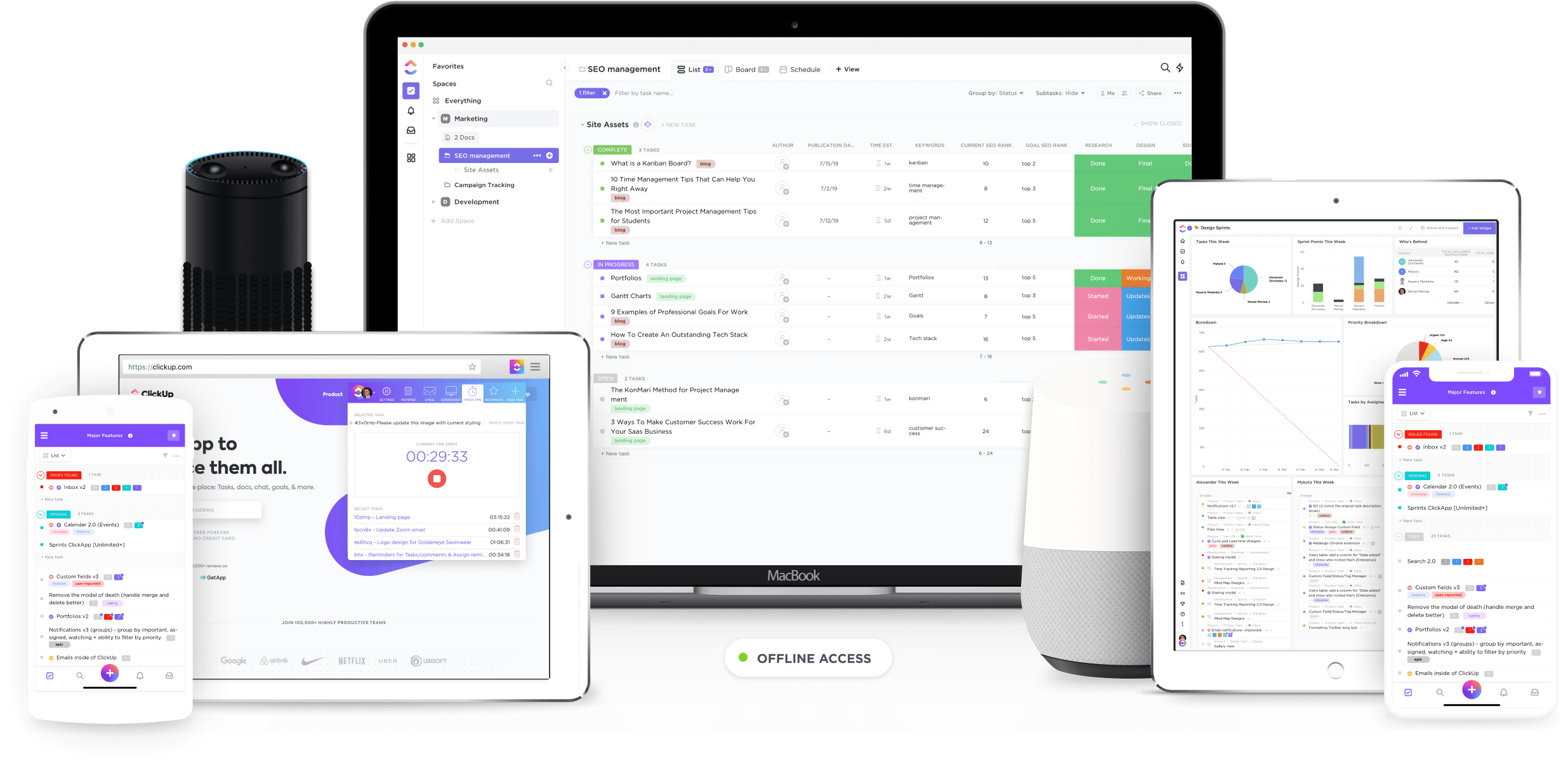KPIs vs Metrics: What They Are & How To Track Them

Sorry, there were no results found for “”
Sorry, there were no results found for “”
Sorry, there were no results found for “”
Ready to learn about KPI metrics?
You’ve come to the right place!
But let’s get one thing cleared up at the start:
While both metrics and KPIs help you measure business performance, they’re not the same thing.
Think of it this way:
If metrics were TV shows, then key performance indicators would be sitcoms.
KPI metrics are essentially kinds of metrics that will help you track your company’s performance over key goals.
But don’t worry.
We’re not going to leave you with just that!
This article’s going to be a deep dive into what KPIs and metrics are and how they differ. We’ll also highlight how you can set up effective KPIs for your business to measure your performance.
And who better to help us along than everyone’s favorite sitcom family – the Simpsons!
Let’s get started!
A key performance indicator is a quantifiable measure that lets your business know how well it’s achieving its key business objectives. The chief operative word here is “key” as these indicators only target core business goals and targets.
Additionally, most KPIs tend to be specific and measurable so that you can easily gauge your company’s performance.
For example, if Bart was looking to be a better student, a good KPI would be something like “number of detentions,” instead of something vague like “amount of trouble.”
Why?
“Number of detentions” is more specific and easier to measure than “amount of trouble!”
Want more concrete and less ‘Barty’ examples? Don’t worry, we will give you plenty of KPI examples in a minute!

KPIs help you evaluate your company’s performance by highlighting how well you’re achieving your core business objectives.
As these performance indicators highlight how well you’re achieving your core business objectives, you can easily monitor your organization’s and team’s performance in achieving those key goals.
Track KPIs with KPI software!
Like OKRs, key performance indicators help organizations keep track of how they’re doing in pursuing their own targets and goals, they can vary from business to business.
Remember, different businesses could use different performance indicators to track their progress in achieving their KPI targets.
For example, let’s say that Smithers is responsible for making sure Mr. Burns’ business makes more money.
However, Smithers has a problem here:
What does he use to track this?
What does he use as the key performance indicator for this?
Should he use indicators like net profit margin?
Or is total revenue a better indicator?

Similarly, different businesses will choose different key performance indicators, even if they’re focusing on performance over the same KPI targets like making more money!
Here are some common KPI examples for different kinds of KPI targets:
Sales growth: percentage of sales growth over a specified period
Sales cycle length: average length of time between initial contact and sales reps closing a lead
Lead to client conversion rate: percentage of leads converted
Ecommerce metrics: metrics related to your ecommerce activities
Organic web traffic: amount of traffic your website attracts
Cost of customer acquisition: total cost of acquiring a customer
Email open rates: percentage of emails opened vs. total emails sent in your email marketing campaigns
Social media KPIs: various metrics over your social media interactions
Free cash flow: amount of money remaining after capital expenditures
Debt to equity ratio: ratio of company’s total liabilities against shareholder equity
Cost of good sold: cost of manufacturing the products a business sells
Employee turnover rate: percentage of employees who left against total employees
Revenue per employee: average revenue that each employee brings
Cost per hire: total cost of hiring each employee
Bounce rate: Percentage of visitors who leave the website without taking any action
Note: Every SEO KPI reporting tool measures the bounce rate.
Engagement rate: the ratio of the engaged sessions of a website to the total sessions
Pages per session: the average number of pages visited by users in a session
We could go on… but you get the idea!

If you want an extensive list of KPIs for your business, check out our article on important business metrics!
KPIs and objectives might seem similar, but they’re not.
An objective is a means to achieve a goal, while a KPI is used to measure how you’re meeting your goals and objectives.
Think of this way:
| Metrics are quantifiable measures that help you identify how your business is performing; however, they are used for every aspect of business performance, and unlike KPIs, they don’t only deal with business objectives. |
You have metrics covering every aspect of your business’ performance!
And since metrics cover everything, when evaluating metrics and KPIs, look at KPIs as a hyper-focused subset of business metrics.
All the KPIs we listed earlier can be used as metrics by your business!
Remember, the only real difference between metrics and KPIs is:
That’s like asking Homer if a three-day-old donut is still worth eating – even if it’s not as fresh!

Of course metrics are still valuable!
While business metrics may not target your key business targets, they’re still very important to your business.
For example, let’s say Krusty the Clown wanted to grow his online business and one of his KPIs was “no. of inbound leads”.
But as time passed and he tracked his KPIs, he found that his inbound leads were decreasing – showing him that there’s a problem.
But that’s it. That’s all that his KPI metrics can tell him.
It can highlight how he’s facing a key problem – but not why it happened.

That’s where the other business metrics come in.
Remember, this decrease could have happened due to a number of reasons such as:
To get to the root cause of this, Krusty will probably need to log into Google Analytics and go over business metrics such as:
This way, metrics and KPIs combine to give your business an accurate impression of how things are going and what you can do to keep things running smoothly!
Okay, so it’s clear that KPIs are as important to businesses as donuts are to Homer.
But how do you go about creating and tracking them?
After all, these have to be detailed, quantifiable measures, right?
You’ll probably need an expert to manage them!
Nope.
Defining KPIs for your business isn’t rocket science!
All you need to do is follow these simple steps:
All efficient KPIs contain three common components.
They are:
Does this sound familiar to the SMART goal setting process?
That’s because it is!
However, setting KPIs is a slightly different process.
But, don’t worry.
Creating KPIs that have all three of these components is a piece of cake!
Here’s a closer look at each component and why it matters:
KPIs are supposed to be accurate indicators of your performance in pursuing certain goals and objectives. And since they’re supposed to help you easily determine how you’re doing, they need to be well-defined.
Let’s go back to our example of Bart wanting to become a better student, where he had two options to set an indicator KPI:
Option one is great as it’s very focused.
It gives Bart a clear idea of what he needs to track to determine if he’s become a better student or not.
The problem with option two is that it’s very vague:
What constitutes trouble?
What activities fall under that?
Since there are no easy ways for Bart to answer those questions, he’s going to have a tough time using it to determine if he’s actually becoming a better student!

Remember, KPIs help you track your performance.
And to track anything, there needs to be some quantifiable measure attached to it.
Think about it.
Is measuring the number of detentions you attend easy? Yes.
Can you easily measure “the amount of trouble you get into”? Not really.
Every KPI you set needs to be measurable to make it easy for you to track how things are going and verify if things are on the right track.
This is probably the most important component of any good KPI.
As you’re using KPIs to track how well you’re performing, your KPI metric must be relevant to whatever you’re doing.
For example, “number of detentions” is a relevant performance indicator for someone looking to be better in school.
However, “number of candies consumed” isn’t!

Similarly, your business KPIs need to be relevant to the business goals you’re tracking. You can’t expect to use marketing metrics to evaluate your HR processes, right?
You now know how to set the right kind of metrics.
But that’s only half the job!
You’ll now have to track them to see how you’re performing.
And while using a pen and paper to note down KPI metrics is still an option, it’s not the right option.
Why?
Because it’s inefficient, risky and can force you to work harder than you actually need to!
Sort of like employing Homer at a nuclear power plant!

If you really want to track your KPIs efficiently, you’re going to need a specialized KPI dashboard.
Luckily, ClickUp has the perfect KPI dashboards for you!
What’s ClickUp?

ClickUp is the world’s #1 project management tool.
Businesses and students alike love using ClickUp as their go-to KPI dashboard and goal-tracking accountability center!
Here’s a closer look at how ClickUp can help you track your key performance indicators:
ClickUp’s Goals are one of the easiest ways to keep track of your KPIs and progress.
In fact, it’s so easy that we’re pretty sure even Barney could handle it!

In ClickUp, Goals are high-level containers that are broken down into smaller Targets. These Targets essentially function as business objectives and you complete them to meet your overall goal.
As you meet your Targets, your overall Goal progress will update in real-time!

The best thing about ClickUp is that you get to customize what metrics you choose for measuring those Targets, such as:
Here’s how this whole process comes together:
(such as “increase company revenue by $500,000”)
(such as “hit $250,000 in sales of Shiny Widgets”)
(by using the currency metric in ClickUp’s Goals)
Using this workflow is especially useful if you are running a remote team and need to communicate more efficiently with team members working from home.
ClickUp’s Dashboards are the perfect command center to manage all your KPIs. They give you high-level overviews of all types of KPI’s in the way you want to track them!
Each Dashboard can contain a variety of Custom Widgets – each monitoring a chosen metric in the style you want.
Here’s a list of all the widgets you can access in ClickUp:

This way, you can visually track all of your key metrics in the way you want to!
It doesn’t matter if they’re sales metrics, financial metrics, donut metrics – you can keep track of all types of KPI’s in ClickUp!

Additionally, you can customize the access rights of these Dashboards. This way, you can share your performance indicators KPIs with different team members and project stakeholders!
KPIs aren’t only limited to business processes.
You can evaluate your team’s performance through a KPI report too!
Luckily, ClickUp has tons of detailed reports for measuring your team’s performance such as:

All of these are super useful while managing team members working remotely.
But helping you track a key performance indicator KPI isn’t all that ClickUp does!
You also get handy features like:
So you’ve found a set of performance metrics and you now know how to track them.
Job done, right?
Not quite.
It’s important to regularly go over your KPI report and readjust your KPIs accordingly.
Why?
Not all of your performance metrics are successful.
Sometimes you may choose a KPI that seems relevant to your goal, but it doesn’t accurately reflect your progress.
Let’s go back to the Krusty example we mentioned earlier:
Krusty was looking to grow his online business and used “no. of inbound leads” as his KPI. While that is a specific, measurable and relevant KPI, it still might be misleading.
For example, he could be getting more inbound leads but his conversion rate may be decreasing and his customer acquisition cost might be going up.
This will probably lead to less revenue – even though he has more inbound leads!

That’s why it’s important to regularly take a look at your KPI data and verify that it’s accurately tracking your progress.
Additionally, if your business goals and processes change, it’s necessary to change your performance metrics too.
Remember, the goal of a key performance indicator is to track your performance over specific goals and objectives. If your key metrics aren’t aligned with those goals, they’re not going to be helpful!
Both metrics and KPIs play a big role in helping you evaluate your company’s performance. They’re going to help you easily monitor things to ensure that everything is on track.
However, you can’t set and monitor these metrics without the right KPI dashboard or goal-tracking accountability center.
Luckily, ClickUp has everything you need to keep track of your KPIs to keep everything rolling smoothly. Whether it’s customizing the kind of metrics you use or what visual graphs you can track them with, ClickUp will help you every step of the way!
Sign up for ClickUp today and let it be your inseparable KPI companion – much like Lisa and her saxophone!

© 2025 ClickUp